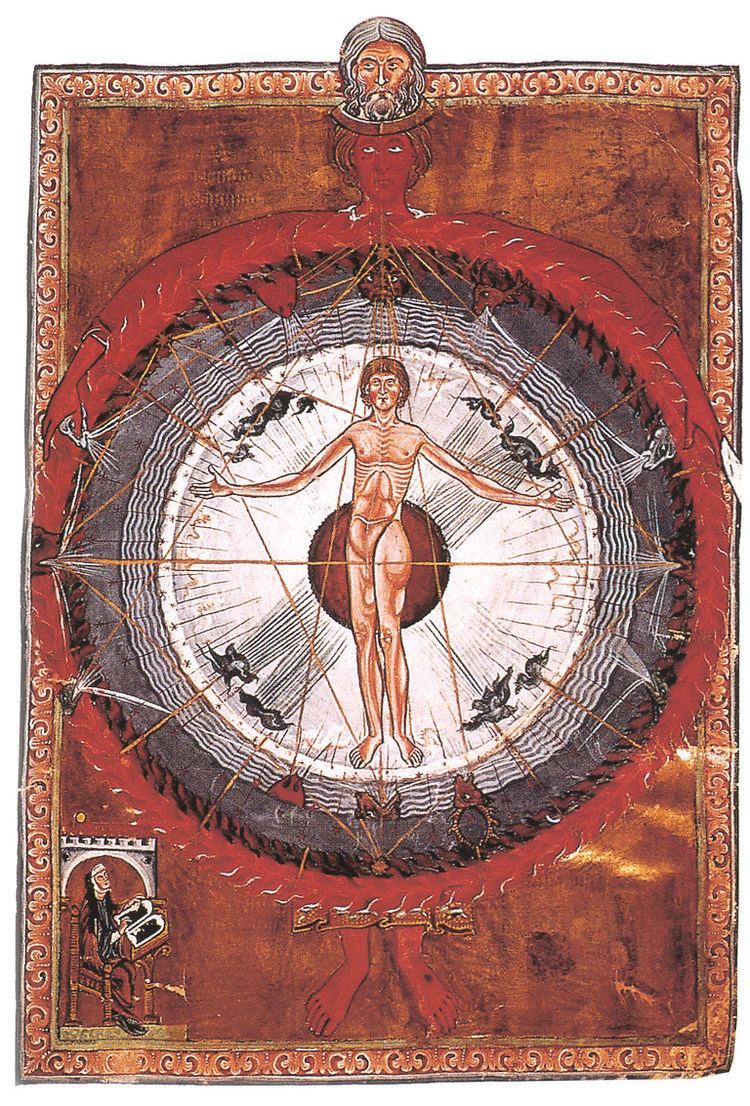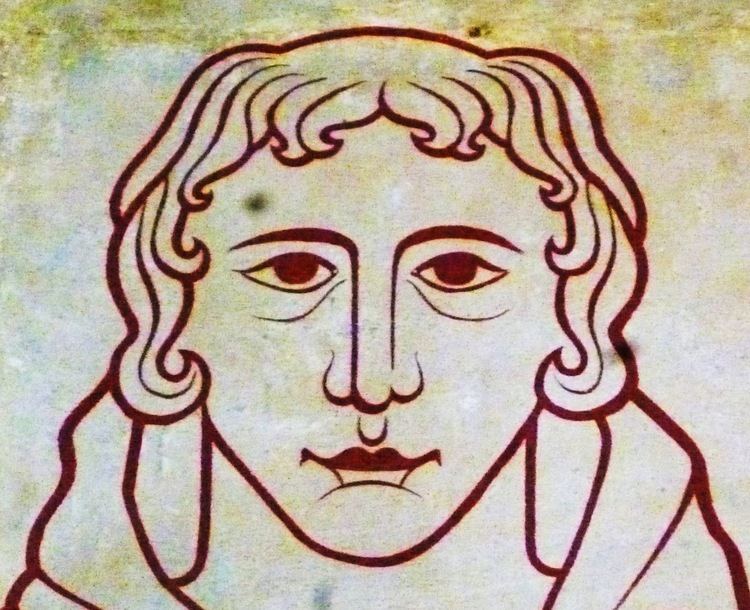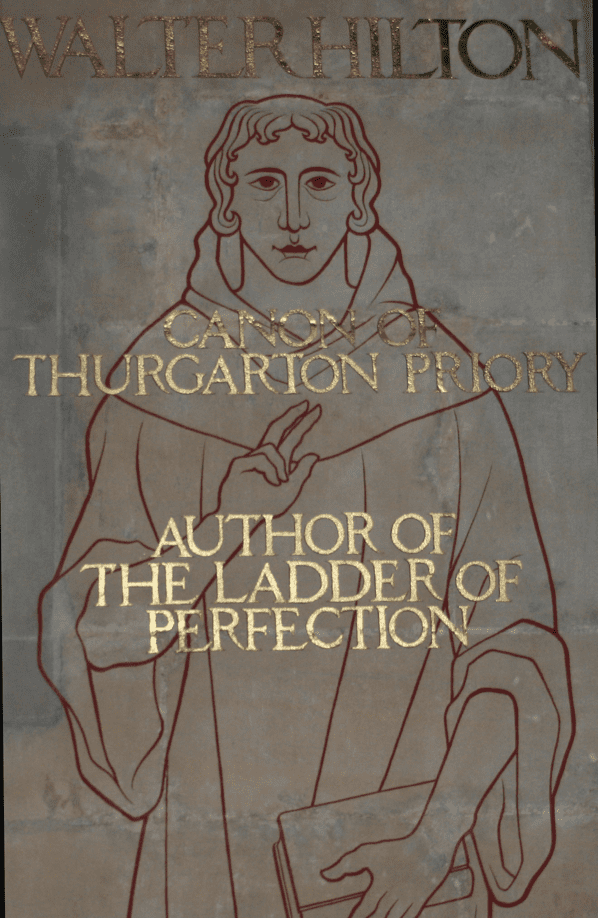Name Walter Hilton | ||
 | ||
Books The scale of perfection, The ladder of perfection, The Scale (or Ladder) of Perfecti, Mixed Life, Treatise Written to a Devout M | ||
The parable of the pilgrim by walter hilton
Walter Hilton (c. 1340–45 – 24 March 1396) was an English Augustinian mystic, whose works became influential in the 15th century.
Contents
- The parable of the pilgrim by walter hilton
- The Parable of the Pilgrim by Walter Hilton 1340 1396
- Life
- Works
- Later influence
- Veneration
- Modern Editions
- References

The Parable of the Pilgrim by Walter Hilton 1340-1396
Life

Walter Hilton was born around 1340–45. Writing long after Hilton's death, an early 16th-century Carthusian, James Grenehalgh, from Lancashire, referred to the mystic as coming "from the same region".

Presumptive evidence indicates that Hilton received some education at the University of Cambridge, which would have been from about 1360 until about 1382. Walter de Hilton, Bachelor of Civil Law, clerk of Lincoln Diocese, was granted the reservation of a canonry and prebend of Abergwili, Carmarthen, in January 1371. In January 1371 Hilton was a bachelor of law attached to the diocesan court of Ely, and the Ely Consistory Court in 1375 also refers to a Walter Hilton. Some manuscripts describe Hilton as a commensor or inceptor decretorum, i. e. he may have completed the studies and examinations that would have entitled him to become a master of canon law, but did not undertake the regency that would have given him the title.

In the early 1380s, Hilton turned away from the world and became a solitary, as he mentions in his earliest extant work, the Latin letter De Imagine Peccati (On the Image of Sin). Not long after (perhaps in 1384?), in his Latin epistle of spiritual counsel, De Utilitate et Prerogativis Religionis (On the Usefulness and Prerogatives of Religion), a.k.a. Epistola aurea, for his friend Adam Horsley, a former officer of the Exchequer, who was about to enter the Carthusian Order, Hilton states that he is himself open to the possibility of joining a religious community, but is not yet certain of his vocation. Given that Horsley entered the Community of Beauvale in 1386, it seems likely that this was around the date when Hilton joined a community – 1386 is often suggested as the date of his entry as an Augustinian Canon Regular into Thurgarton Priory in Nottinghamshire.
Between around 1386 and 1390, Hilton probably wrote the Epistola de Leccione, Intencione, Oracione, Meditacione et Allis (Letter on Reading, Intention, Prayer, and Meditation), a brief treatise in English Of Angels' Song, which criticizes one aspect of Richard Rolle's spirituality, and The Epistle on the Mixed Life which instructs a devout layman concerning wealth and household responsibility, advising him not to give up his active life to become a contemplative, but to mix the two. Because of strong echoes between the Mixed Life and the first of the two books of Hilton’s major work, The Scale of Perfection, both were probably written around the same time, in the late 1380s. Hilton may also have translated The Prickynge of Love (also known as the popular Stimulus Amoris, an expanded version of a book originally by the 13th-century Franciscan James of Milan, which by that time was passing under the name of Bonaventure), though this remains a matter of dispute.
In his final years (from c. 1390 until c. 1396), Hilton probably wrote his Latin letter Epistola ad Quemdam Seculo Renunciare Volentem (To Someone Wanting to Renounce the World), and a brief piece on scruples entitled Firmissime crede. He produced the English version of Eight Chapters on Perfection, a translation of a now lost Latin work by the Franciscan Lluis de Font (or Luis de Fontibus), an Aragonese Franciscan who had a regency in theology at Cambridge in either 1391–3 or 1392–4. Also in this period, Hilton produced the second book of The Scale of Perfection. According to manuscript tradition, Hilton died on 24 March 1396 as an Augustinian Canon Regular at Thurgarton Priory. However, this manuscript was written much later than the history it reports, and it contains a number of historic mistakes.
Works
The first book of The Scale of Perfection (the title is editorial, appearing only on half the manuscripts of Book One of the Scale) is addressed to a woman recently enclosed as an anchoress, providing her with appropriate spiritual exercises; the bulk of its 93 chapters deal with the extirpation of the "foul image of sin" in the soul – the perversion of the image of the Trinity in the three spiritual powers of Mind, Reason and Will (reflecting the Father, Son and Holy Spirit respectively, according to a tradition drawn from St Augustine) – through a series of meditations on the seven deadly sins. The second book, which opens by addressing itself to Hilton's former reader, who, he says, has further questions, seems from its style and content rather to be addressed to a larger, perhaps more sophisticated audience; its major themes are reformation of the soul in faith alone and in both faith and feeling. The latter is described in an extended metaphor as a spiritual journey to Jerusalem, or "peace" in meditation, a gift which is also its own giver, Christ. The first book of the Scale was apparently written some time before the second and was circulated independently.
The Mixed Life occasionally appears with the Scale in fifteenth-century manuscripts, and was printed by de Worde in 1494 as a 'third book' of the Scale, possibly at the desire of Lady Margaret, although the Mixed Life occurs in only half of the surviving copies of that printing. All later printings of the Scale also included the Mixed Life.
Hilton also wrote three other Latin letters of spiritual guidance, the Epistola de Leccione, Intencione, Oracione, Meditacione et Allis, the Epistola ad Quemdam Seculo Renunciare Volentem and Firmissime crede, as well as a scholastic quodlibet on the appropriateness of reverence shown to images in churches, a practice criticised by Lollards. He also wrote commentaries on the Psalm texts Qui Habitat and Bonum Est (Psalms 90.1 and 91.2), and perhaps on the Canticle Benedictus (Luke 1.68) as well.
Later influence
Hilton's spiritual writings were influential during the 15th century in England. They were used extensively shortly after his death in the Speculum spiritualium. The most famous was the Scale of Perfection, which survives in some 62 manuscripts, including 14 of a Latin translation (the Liber de nobilitate anime) made around 1400 by Hilton's contemporary in Cambridge and Ely, the Carmelite friar Thomas Fishlake (or Fyslake). In this translation the Scale became the first work written originally in English to circulate on the European continent. The Scale and Mixed Life were printed by Wynkyn de Worde in Westminster in 1494, at the request of Lady Margaret Beaufort, Countess of Richmond and Derby, mother of King Henry VII, and five more times before the English Reformation of the 1530s.
With the revival of the Roman Catholic Church in England in the 19th century, a modernised version of a 1659 edition was issued by Fr J. B. Dalgairns in 1870. Evelyn Underhill published an edition of the Scale in 1923.
Veneration
Hilton is honoured in the Church of England on 24 March and in the Episcopal Church (USA) on 28 September, together with Richard Rolle and Margery Kempe.
